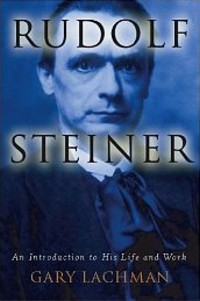Rudolf Steiner: An Introduction to His Life and Work
By Gary Lachman
Tarcher Book Publishers, February, 2007. Click to Buy this Book!
When speaking of the life and work of Rudolf Steiner, the greatest challenge is to express it in general terms. Gary Lachman has done just that. The other challenge for those who know Rudolph Steiner’s work is to speak of it in an unbiased way. Gary Lachman invites you to know Rudolf Steiner in his humanity; a man who had one foot on this earth and the other in the spiritual world that weaves through every physical Higgs boson particle.
At the core of Rudolf Steiner’s teaching lies the principle of metamorphosis. He invites us to observe and think deeply about the form-changing process we can observe in nature and apply that to human evolution. Gary Lachman uses this same principle to reveal the life of Rudolf Steiner through the pages of his book. Steiner himself wrote in his autobiography that its purpose was to “trace the course of his thought and to show how it evolved over time.” Yet many of his followers today embalm the Steiner they think he was in the ideas of a century ago when he lived.
One of the key principles to change is the encounter with a force of resistance. Through the journey that Gary sketches we come to understand that at every turn in his life Rudolf Steiner met with resistance in one form or another, both from without and from within his organization. He still does today. Why wouldn’t such a significant thinker be as well-known as Einstein? Einstein! the one whose theories do not metamorphose into modern scientific thought as well as he may have hoped. On the back cover of Gary’s book we read, “Rudolf Steiner — educator, architect, philosopher and agriculturist — ranks amongst the most creative and prolific figures of the early twentieth century. Yet he remains a mystery to most people.”
What Gary Lachman has written in this biography goes a long way to unraveling this mystery. Steiner wanted to find ways of expressing with utmost clarity what he called “the living activity of the human spirit.” Gary explains that from an early age Steiner was aware of things “seen” and things “not seen.” The things “not seen,” meaning not grasped by the senses, weren’t fantasies, or what we’d call “mere imagination.” They were inner events taking place on a kind of interior stage, the soul.” Gary says that “Rudolf Steiner talks about the visual world as a tapestry behind which is a great work.” More »

